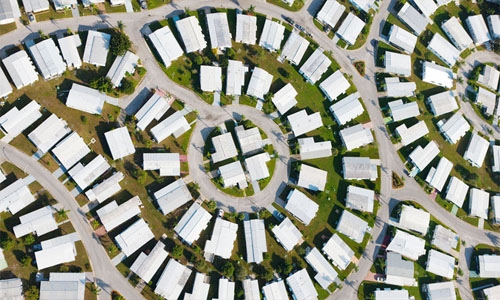Bahrain needs eco friendly cool roofs
Bahrain’s 2030 Economic Development Strategy with its focus on improving infrastructure is robustly driving the construction and housing industry’s growth in the kingdom. This growth is also being complemented by the dramatic rise in demand for small housing units in Bahrain with over 60,000 families awaiting government-subsidized homes. According to the Bahrain eGovernment website data on housing, there are 3000 marriages solemnized every year and assuming that even if half of these weddings result in housing requirement, it translates to a continuous requirement of 1500 houses annually. The government is rapidly matching the speed of the housing requirement with suitable projects but there is also an express need to ensure the well-being of the environment in this effort.
With construction in urban Bahrain developing rapidly, the open spaces are being used up and natural green lungs of the cities such as public parks are feeling the rising pressure of the population. Amongst other collateral impacts, this is causing a noticeable spike in ambient urban temperatures and rising urban heat island effect which is directly resulting in peak demand for electricity for air-conditioning. This rise in heat levels is particularly challenging for a nation like Bahrain where the majority of months in a year witness high level of temperatures. Given these conditions, it is essential that any urban development activity, especially in the construction sector to ensure that a further worsening of urban temperatures is not allowed. This is where the concept of “cool roofs” can help achieve the twin objectives of cooler buildings that need lesser energy for air-conditioning while keeping the urban temperatures in check.
Today’s urban buildings both residential and commercial are the key source of high energy consumption and greenhouse gas emissions and Bahrain’s urban building landscape is no exception. Cool roof technology is not a new concept but is not a wide-spread one either, especially in the retail residential construction sector. Cool roof technology improves a building’s thermal energy performance by acting mainly on the energy requirement for air-conditioning. High solar reflectance and thermal emissivity properties of cool roofs help not only reduce the amount of heat emitted from a building to the atmosphere, but also reduce the heat radiating into the building from outside
Cool roofs can be ensured by resorting to humble and affordable options such as lime plaster or to a slightly expensive option of using specially designed tiles that equally do a good job in reflecting heat. Light tile roofs with metal decking can also deliver a good impact in cooling the building and reducing the air-conditioning load. The traditional bitumen covered and cement paved roofs on the other hand are fastly proving to be a thing of past globally as their heat absorption capabilities are limited and thermal insulation properties poor. These practices continue to see usage due to the cheap cost of installation, but this needs to be curtailed in Bahrain no matter how big or small the building is.
In order to enable large scale usage of cool roofs, there is a need to commission detailed scientific studies based upon meteorological modelling and thermal simulation to measure the efficacy and benefits of cool roofs. Countries such as the United States have conducted studies that have established interesting findings in favour of cool roofs. According to a study by Rosado, et al, the annual savings in electricity costs for air-conditioning amounted to 26 per cent due to the installation of cool roofs. Banking on studies such as these, the US building and construction sector has proceeded in a big way to adopt cool roofs. This has enabled heat mitigation in a scientific and sustainable manner.
Similarly, in Auckland, New Zealand a scientific study conducted to measure the efficacy of cool roofs delivered very encouraging results. The study observed the parameters of two identical buildings, one furnished with a red roof and the other with a white roof. The conclusions proved that the building with the white roof not only reduced the dependence on air-conditioning but also increased the efficacy of the limited air-conditioning that was used. If the cool roofs can have such interesting results in temperate countries such as New Zealand, the concept can have endless opportunities in nations such as Bahrain where the climate is arid and dry. A group of white roofed buildings can have a combined impact on the immediate temperature of the vicinity and reduce the heat quotient in the neighbourhood by as much as 2 degree Celsius
Cool roofs concept coupled with increasing green spaces and water bodies can vastly reduce ambient temperatures of urban Bahrain, provided a largescale implementation is undertaken.
- Kota Sriraj
Kota Sriraj
Related Posts


